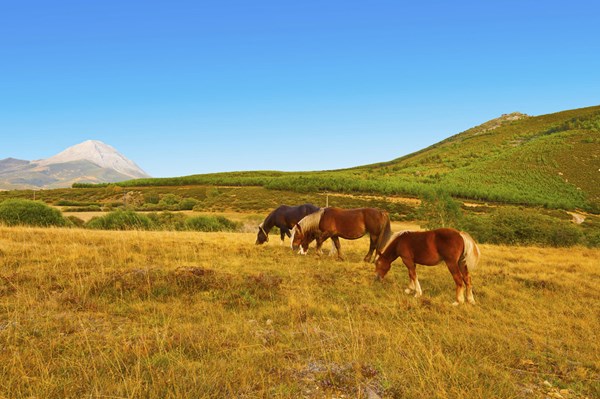 Credit: Thinkstock Farm managers need to consider what grazing dry grasses does to their pastures.
Credit: Thinkstock Farm managers need to consider what grazing dry grasses does to their pastures.Some Michigan horse owners are beginning to see the effects of a hot and dry summer. As the top soil dries, short pastures are browning and forage growth is slowing down.
Over grazing dry pastures can permanently damage a plant stand. Horses will grasp plants down to their base, destroying leaves that would normally provide nutrition to the plant’s root system. Now is the time to practice good grazing management to ensure you have a productive pasture through the grazing season. Try incorporating some of the following pasture management strategies into you grazing system:
- Monitor your forage stands and make sure that you have at least 4 inches of uniform growth throughout your pasture.
- Practice rotational grazing to rest fields and let them grow back 8 – 10 inches before grazing.
- If pasture supply is low, limit grazing early and supplement your horse’s diet with hay.
- Create a sacrifice lot to limit your horse’s grazing during the dry season as well as the muddy season.
While we have had a great harvest for first cutting hay in Michigan, we need rain to ensure a successful second cutting. A dry summer can have a domino effect on winter forage supplies. A dry summer will cause more Michigan hay to be fed in the summer months as well as result in low annual hay production. Consider planning for your winter hay supply early this year. If you usually purchase second cutting hay, check out this year’s first cutting hay supply. Remember that hay quality has little to do with first versus second cutting and more to do with field management, species of forage, and stage of plant maturity when cut. For more information on hay selection read the Michigan State University Extension article: Feeding Different Cuttings or Species of Hay to Horses During Drought.
For more information from Michigan State University, visit http://www.msue.msu.edu.


